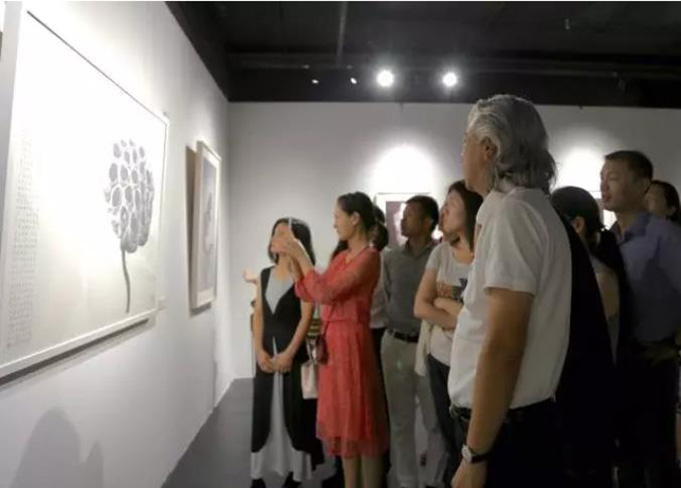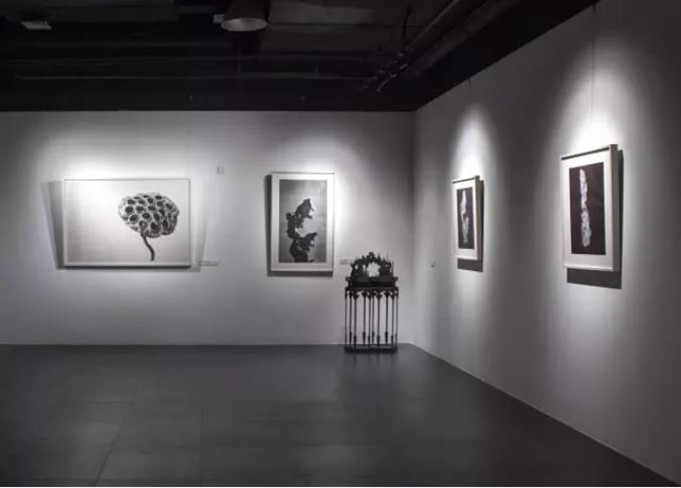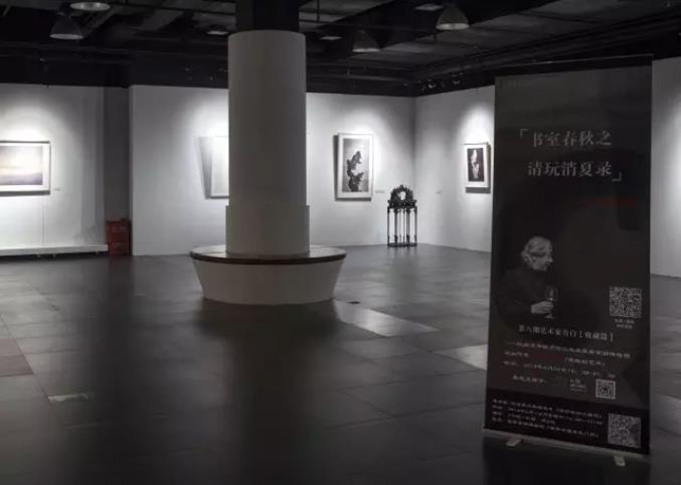The Artist Within|Liu Shan: It takes a family to Make a Collector
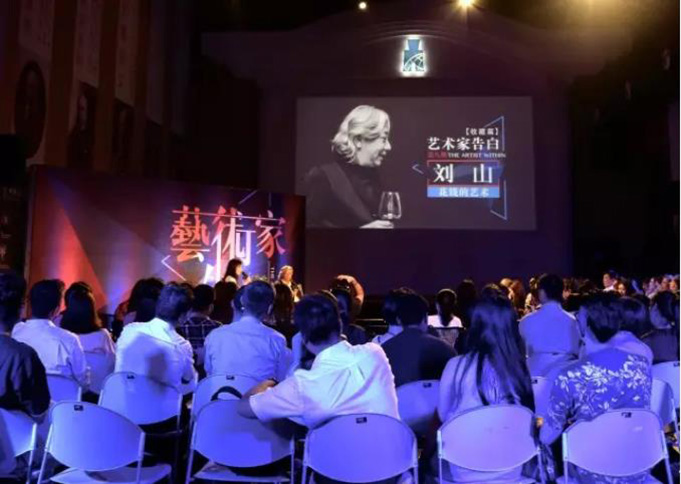
On June 29, a special speaker came to Arts Center of Chinese Museum of Finance.
The guest speaker Liu Shan is a collector who has been involved in art collection for more than three decades.
On the rain-washed summer night, the “aging ex-gangster” (a typical idiom in Beijing dialect referring to a man who is often on the wrong side of the law but typically for minor offenses. Now, it also denotes aging elite in a certain sector) shared his long-cherished story about collection and pondering over life with the audience.
He considered art collection as an art of “spending money”. He also noted that it was his family that made him a real collector.
Opening chapter: Once in A Lifetime
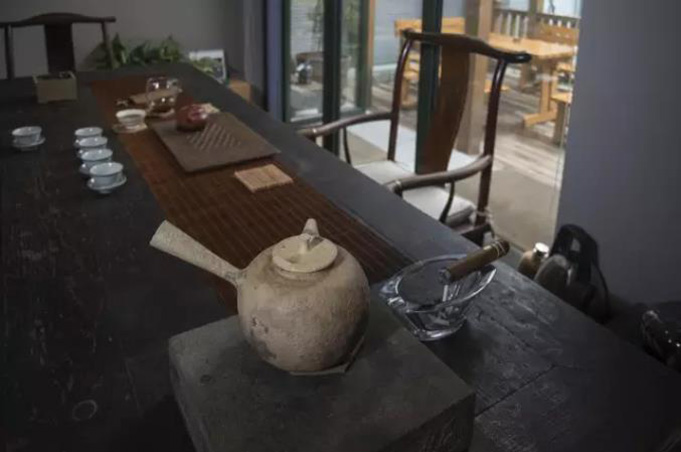
Once in a life time,
A concept originating from the Japanese tea ceremony,
Describes the encounter that a person only gets to experience once in a lifetime.
Nonetheless, for this one and only encounter,
One would devote all that he has.
Just like today,
When you walk out of the hall,
We may never meet again,
So let’s cherish today as much as we can.
Wang Yiting (anchor): I used to know little about art. However, out of my passion for art, I joined the art profession at the age of 30 by pursuing a doctoral degree at the Central Academy of Fine Arts (CAFA). The title of my doctoral thesis is “The Study on the Fashion-Orientation of Chinese Contemporary Art”. When writing my thesis, I got to know many teachers and predecessors, who gave me many valuable suggestions. One of them joined us today and he is our guest Mr. Liu Shan. You may not know much about him as he always keeps a low-profile. This is also the first time he shares about his collection experience in public.
[History of Contemporary Art Collection]
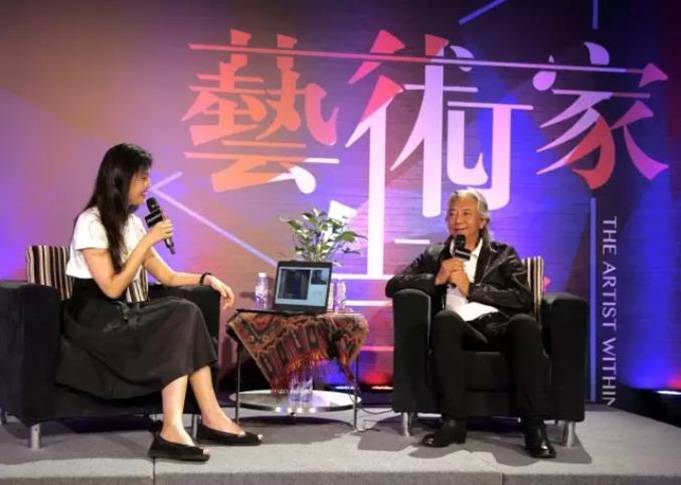
Wang Yiting (anchor): I think our audience might want to ask you one question: can you make any money from collection? If yes, how do you spend your money? And what have you got in return?
Liu Shan (guest): As a matter of fact, the answer is no. I’m still paying for it. It is like a cycle. I spend the money I earned from collection on collection.
Wang Yiting: From what I’ve heard, you have collected a series of highly celebrated contemporary art works? Could you share with us your collection experience?
Liu Shan: I bought a representative painting of face mask by Zeng Fanzhi on an auction in 2002. It is a small one sold for RMB 40,000-50,000 yuan. In 2004, the contemporary art market pieces were in full swing and the price of that painting soared to RMB 600,000 yuan.
I have a work by Fang Lijun bought on an auction in early 2000. It was sold in 2007, a peak time of China’s contemporary art market. The money I gained from it became part of the sum I spent on photography collection.

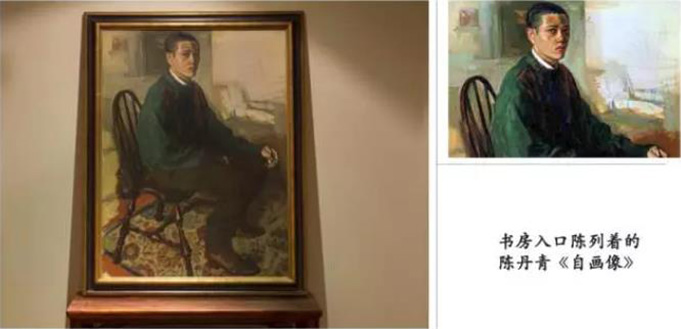
Wang Yiting: Chen Danqing is your friend, and you always talk about the side-splitting small-tak between you two. Self-Portrait by Mr. Chen is among your collectible. May I ask you how much the painting is?
Liu Shan: Self-Portrait by Chen Danqing, as well as his other works – chronologically speaking – constitute the most complete series in my collection. The current value of the painting is estimated to be hundreds of times as much as when I collected it. I don’t think I will sell it, so it is priceless to me, so to speak.

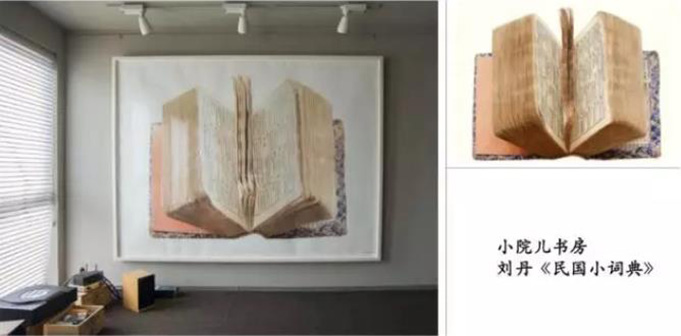
Wang Yiting: The name Liu Dan may not ring a bell for the audience, but Mr. Liu is an artist that I admire very much. In the most esteemed collector community in New York, Liu Dan is acclaimed as much as Ni Zan (a painter in the late Yuan Dynasty) was sought after by ancient collectors. To have his painting or not signifies a collector’s taste.
Liu Shan: I learned about Liu Dan from Acheng (writer). In the late 1990s, Acheng visited me and we had a meal together. I was collecting sketches back then. He told me, “If you want to collect sketches, there is one artist you cannot miss, and he is Liu Dan.”
Liu Dan lived in the US before 2004 when he came back to China. I came to know him when I visited him to take a look at his work. I ordered the work A Tiny Dictionary from the Period of the Republic of China (1912-1949) within a week. I finally got it after almost six years.
Wang Yiting: It is known to the entire collector’s community that Liu Dan’s work is hard to get. For one thing, it takes him a long time to produce something new. For another, he will not sell his work to someone he dislikes. Hence not everyone is lucky enough to have his work in their collection.
[A Chance for Photographic Collection]

Wang Yiting: Mr. Liu, just now you said that you’ve gradually turned to photography collection in the wake of contemporary art collection. Could you tell us why?
Liu Shan: There is somehow a connection between me and photography. I fell for photography since I started school. After graduation, I bought a camera the first time I earned money on my own. To be more specific, I turned from a photography lover to a photographic collector mainly because of Xu Lei (contemporary artist) and Danqing. Xu Lei has the most profound insights in photography and the composition of pictures.
At that time, Danqing said something that I still bear in mind until this day. He said, “It’s wonderful that you are learning photography, so that you have something of leisure at old-age.” It was in 2003 and 2004 that I started photographic collection. Contemporary art went viral in those years, so I was thinking of choosing a less popular field. Then I chose photography. I happened to acquaint myself with some Japanese and European galleries.
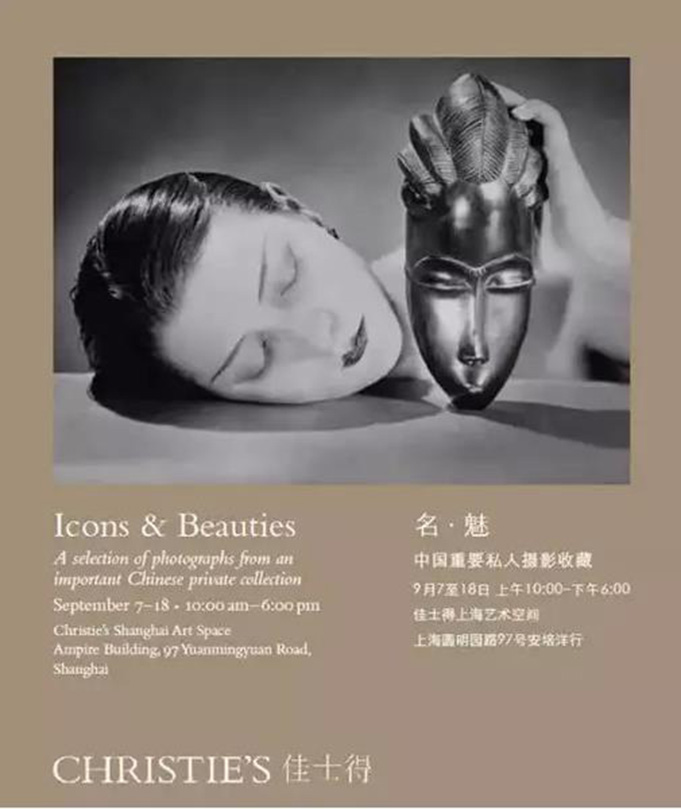
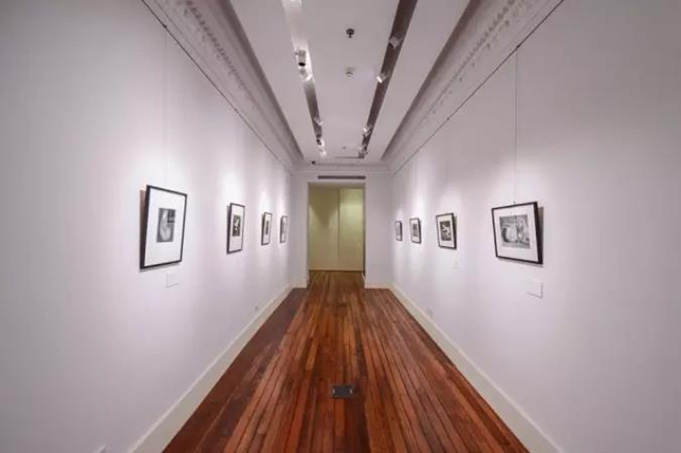
Wang Yiting: Christie’s curated a solo picture collection exhibition for Mr. Liu in Christie’s Shanghai Art Space. It is no doubt a gesture of recognition from the world-class auction house towards his photographic collection. Was it a rather unconventional exhibition?
Liu Shan: The exhibition was indeed the only one of its kind in China in terms of its preparation. The curator was a photography expert from Christie’s and the photography collection consultant of the Pinault family. He put aside the era, geographical location and name of artists when arranging the exhibition items and merely presented photographic elements of these works instead.
The exhibition consisted of two sections—Icons and Beauties. Icons were street views, and Beauties were associated with human bodies. Moreover, the exhibition venue was also unique; it was an old British house from the 1930s in Shanghai, the same age when those European pictures were created.
【It takes a family to make a collector】

Wang Yiting: Mr. Liu, could you tell us some stories about when you were only an art “amateur” 20 years ago? And perhaps the first time you had something in your collection as well?
Liu Shan: It was the early 1980s, I suppose. There was an oil-painting calendar by Chen Yifei at my home. It depicted a woman playing the flute, and I always thought that it was quite a fine realistic portrait. When we ran out of the entire calendar, I framed the painting and hung it on the wall. I was employed by a foreign enterprise in 1986. As I had a little bit saved up, I bought three ink wash paintings by Lou Shibai on the recommendation of my friend. That was my first collection.
I started to work in a Swedish logistics company in the 1990s. Once when I took my daughter to China Guardian in Beijing Working People’s Cultural Palace on weekends, we came across a small auction by China Guardian. In those days, people would use slideshow to demonstrate the pictures of goods. I had my eye on a pair of blue-and-white porcelain wine vessels.
It was a no-reserve auction. The starting price was RMB 100 yuan, and I offered RMB 300 yuan right after a 200 bid, and that became the hammer price. I didn’t even know how to pay for it. Later when the staff came to me, I paid RMB 300 yuan in cash and took the vessels home. Since then, I would make a weekly visit to the small auctions of China Guardian, so I would say my collection began with porcelains.
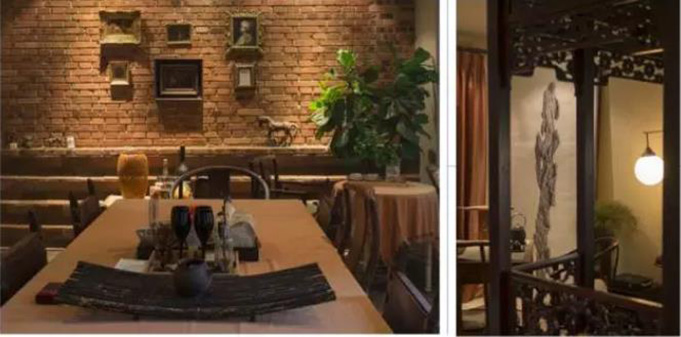
Wang Yiting: You have a wide range of collectables, including both traditional ink wash paintings and modern art, like paintings, photographs and even furniture. (Picture: Liu Shan’s home)
Liu Shan: Some of the small oil paintings on the wall were collected in Europe. On the right side, you can see an important work by Liu Dan, Ten Differentiated Views of the Honorable Old Man. I started to collect furniture in the 90s solely because I wanted to decorate my house and, as it turned out, collections became part of my life.
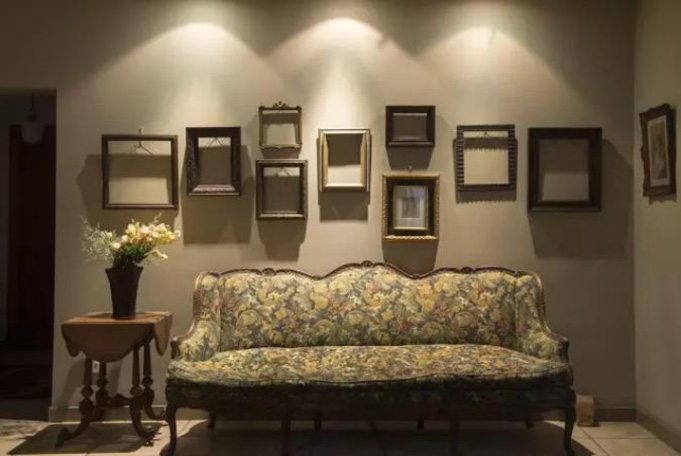
This wall displays a series from my collection. When I’m abroad, I would check out antique shops and antique picture frames always draw most of my attention. This wall presents my collection of antique picture frames.
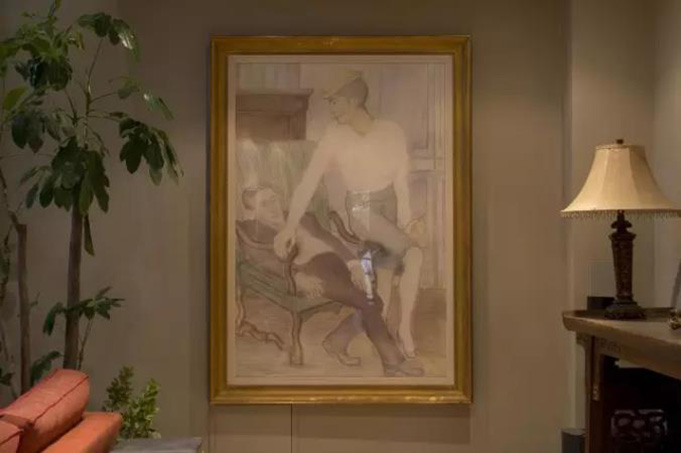
This is a drawing by Pierre Klossowski, the elder brother of the painter Balthus. I couldn’t afford Balthus’ paintings, but his brother’s drawing was within my reach. Klossowski was an illustrator and his works feature an erotic expression. I’d like to talk about a story about this drawing.
After I bought it, Liu Ye (a contemporary artist) happened to bump into it in an exhibition and he also wanted it, only to be told by the gallery owner that the drawing had been sold to a Chinese collector. The other day he visited me to see the drawing with a friend, and he said, “I can’t let it go. I want to switch it with one of my masterpieces.”
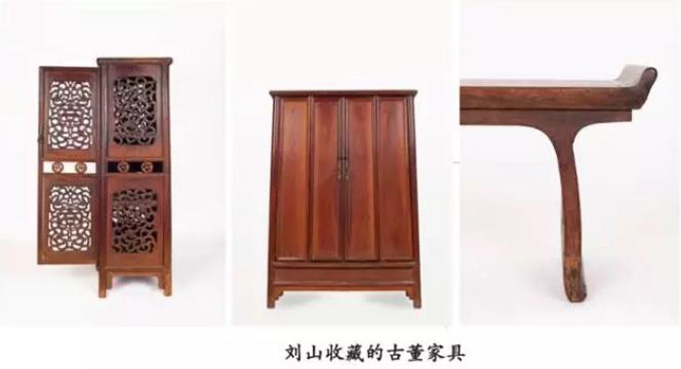
Wang Yiting: Mr. Liu also collects antique furniture. He is not the biggest spender, nor does he have the biggest collection. Yet, anyone from an antique furniture store would never underestimate him as a collector.
Liu Shan: Antique furniture costs me a fortune. I wouldn’t have made it without my wife’s support. When you are a collector and you have a family, you should always make sure that you and your significant other are on the same page. I did this by taking my wife with me when I go out, and I usually take her with me when hunting for furniture on weekends.
I was at a loss when I began collecting furniture. After a year, luckily, I fixed my goals. I aimed for large-sized beech furniture at the time. It was partly because there was already a well-developed beech furniture industry in mid-to-late 90s, when the beech furniture was reasonably priced.
It was also due to its relation with scented rosewood, just like that between sketching and oil painting. Beech wood, or sketching, can best speak for one’s personality. A craftsman would always make a sample out of beech wood before using scented rosewood. Beech wood is thus the best representation of a craftsman’s personality, both in terms of design and style.
【Travel with a Sharp Eye】
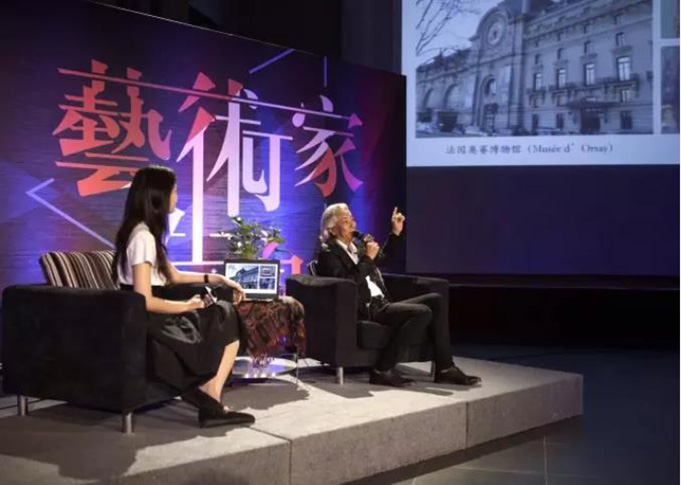
Wang Yiting: Mr. Liu just mentioned the collector’s eye for reviewing a work. What exactly is a collector’s eye?
Liu Shan: I’d like to talk about some of my travels regarding arts before elaborating on the collector’s eye. To be honest, museums can be too profound a topic, but I could know and talk a bit about it for two reasons. The first one is what I learned something from my museum tours in Europe with Chen Danqing. I joked with him that “It’s like you are tutoring a graduate student. I don’t read much, not even art history.” He said you don’t have to and now you only need to stay with me. And to be more exact, he said, I’m a doctoral supervisor.
Secondly, I benefited a lot from my experience as a curator. I began helping Liu Dan with his solo exhibition at Suzhou Museum since 2011. Everything was settled in 2013. I engaged in every step of the process from preparation for the exhibition to painting collocation to overall coordination.
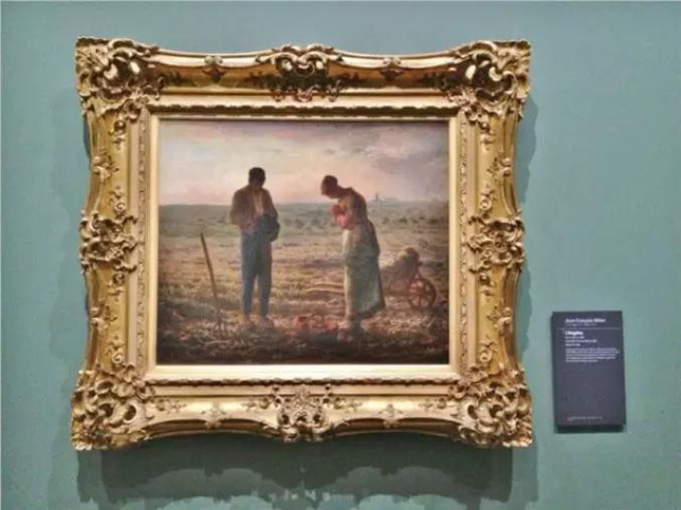
I have some tips for museum tours. Make sure you have all the necessary information about your destination. You might be able to keep some paintings or artists in mind after each tour. When you come to understand one or two artists, you can make sense of this era.
You should see beyond the painting itself. What is the picture frame of this painting and why this frame? Is it a frame of the day or is it from later times? You should also remember the color of the wall. It’s important, because it might have a bearing on your taste in decorating your house, your lifestyle and even your dressing code in the future. It will definitely have a bearing.
Wang Yiting: For a lot of people, the venues of art exhibitions are like white boxes as if there are only white walls on the venues. In fact, this is not always the case for top exhibitions. What is important is the overall artistic setting and impression of the venue.
The art of spending money is all about bringing home the atmosphere of the museums after a tour. You spend the money for yourself and you take the entire art gallery with you. For collectors, at the end of the day you will find that you are actually collecting visions and insights.
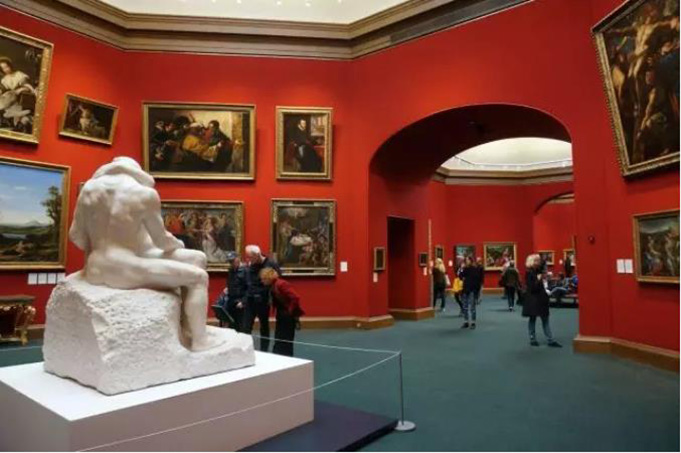
【A Groundbreaker in Collection】
Liu Shan: I’m especially grateful to Xu Lei, Chen Danqing and Acheng when it comes to contemporary art collection and photography collection. A Cheng has profound and unique insight in photography. Liu Dan is the one that I admire the most both for his lifestyle and painting style. He is distinctive not only in his understandings of traditional Chinese culture – which he acquired as a kid. I’ve seen a drawing by the 14-year-old boy, a very small one. His uniqueness also lies in his sound grasp of the western sketching art.

